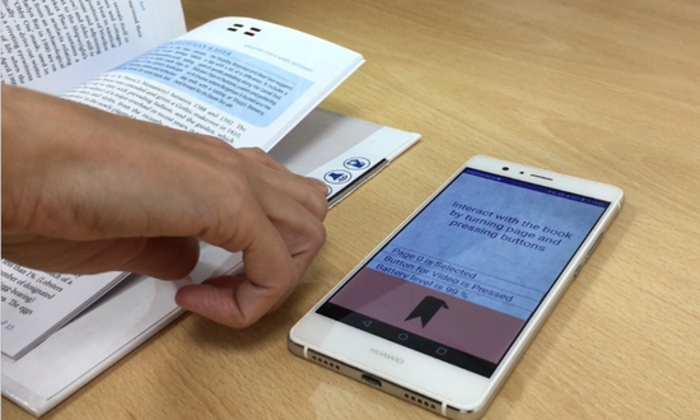[ad_1]
GUILDFORD, United Kingdom — This new examine is unquestionably a web page turner. Researchers from the College of Surrey say augmented actuality might quickly be the way forward for paper books.
Researchers have unveiled the third era (3G) model of its Subsequent Technology Paper mission. It permits the reader to devour info on the printed paper and display screen side-by-side. This may permit printed books to make a comeback in opposition to the recognition of e-books.
“The way in which we devour literature has modified over time with so many extra choices than simply paper books. A number of digital options presently exist, together with e-readers and sensible units, however no hybrid answer which is sustainable on a industrial scale,” says Dr. Radu Sporea, senior lecturer on the Superior Expertise Institute, in a university release.
“Augmented books, or a-books, may be the way forward for many e book genres, from journey and tourism to training. This expertise exists to help the reader in a deeper understanding of the written subject and get extra by way of digital means with out ruining the expertise of reading a paper book.”
To make use of augmented reality books, all you have to do is swipe your finger or flip the web page. The knowledge will then be displayed on a close-by gadget.
These “a-books” are capable of be manufactured on a semi-industrial scale due to new options like energy effectivity and pre-printed conductive paper.
“The unique analysis was carried out to enrich travel experiences by creating augmented journey guides. This upgraded 3G mannequin permits for the opportunity of utilizing augmented books for various areas resembling training. As well as, the brand new mannequin disturbs the reader much less by robotically recognizing the open web page and triggering the multimedia content material,” explains George Bairaktaris, a postgraduate researcher on the College of Surrey and member of the Subsequent Technology Paper mission group.
“What began as an augmented e book mission, advanced additional into scalable consumer interfaces. The methods and information from the mission led us into exploring natural supplies and printing methods to manufacture scalable sensors for interfaces past the a-book.”
Now, you could be questioning what’s the distinction between augmented actuality and virtual reality. Tulane College researchers broke it down like this:
- AR makes use of a real-world setting whereas VR is totally digital
- AR customers can management their presence in the actual world; VR customers are managed by the system
- VR requires a headset gadget, however AR may be accessed with a smartphone
- AR enhances each the digital and actual world whereas VR solely enhances a fictional actuality
The examine is revealed within the journal IEEE Pervasive Computing magazine.
[ad_2]
Source link


Recent Comments